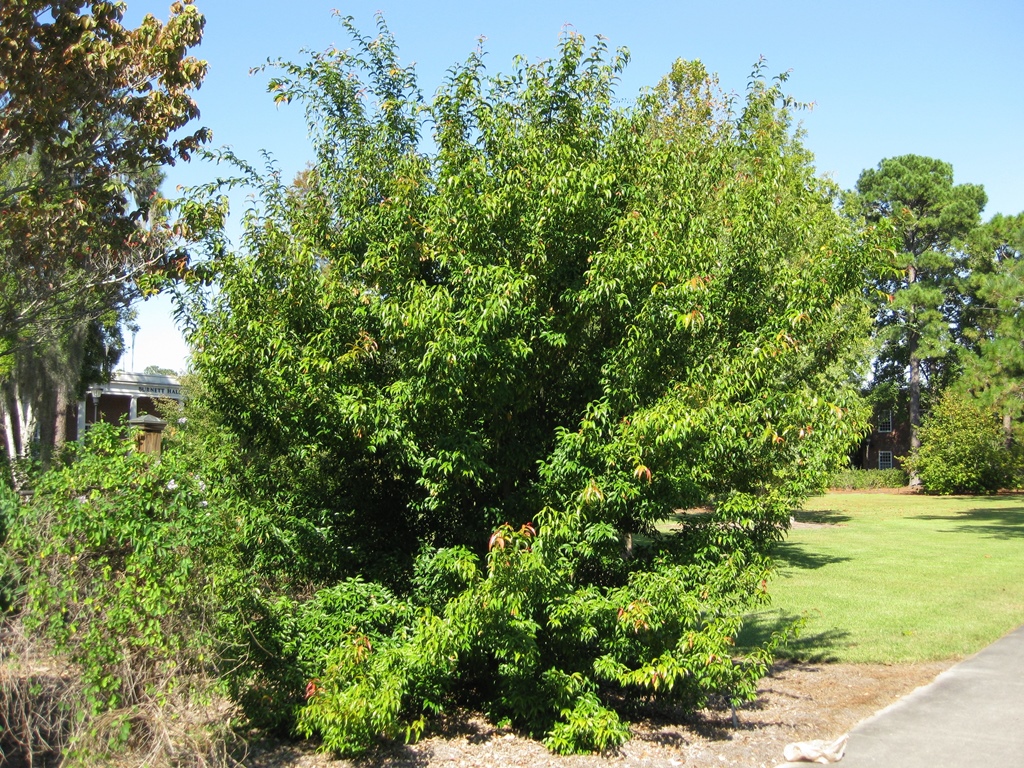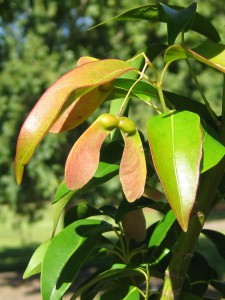Acer fabri (Faber’s Maple) is unlike maples familiar to most people as it does not have the typical three or five-lobed leaves. Instead, leaves of Faber’s maple are un-lobed, slender and very glossy. In addition, most people know maple as a deciduous tree, dropping its leaves in fall, whereas Faber’s maple is evergreen.
Faber’s maple grows as a small, broad tree up to a height of about 30 feet. Leaves on new growth are tinted red, and the familiar samaras (“helicopter” fruits), appearing in September, are also red. New growth on some trees has more red coloration than on others, suggesting the possibility of selecting forms with more red coloration. Hardiness is not confirmed but it is believed to be adapted to USDA Cold Hardiness Zones 7b-9. Leaves reportedly senesce and fall when winter temperatures drop to the low 20s or high teens (°F). Accordingly, Faber’s maple is likely to be evergreen in most of Florida and semi-evergreen after cold winters or when grown in the cooler areas of its hardiness range.
Faber’s maple is native to mixed forests of Vietnam and central and southern China, where it is known as “luo fu feng”. This slow-growing tree fares best in partial sun and well-drained soil. No serious pests are known at this time.
The reddish new growth, glossy green leaves, red fruits and growth as a small evergreen tree collectively make this a very ornamental tree. Rare in cultivation, Faber’s maple deserves to be planted and evaluated more widely. Propagation is by seed and reportedly summer cuttings.
Acer fabri (Faber’s maple) has not yet been evaluated using the IFAS Assessment of Non-Native Plants in Florida’s Natural Areas web assessment tool. Without this assessment, the temporary conclusion is that A. fabri is not a problem species at this time and may be recommended.
- Foodscaping – Create Beauty and Bounty - April 7, 2022
- Cold-hardy Bromeliads for North Florida - December 15, 2021
- How to Hunt for “New” Plants - September 2, 2021


